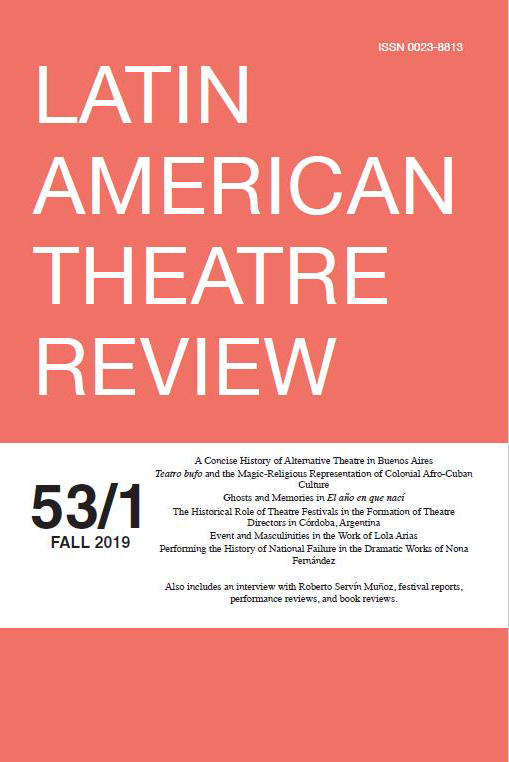Resumo
In the play El año en que nací by the Argentine Lola Arias, eleven performers born during the Chilean dictatorship (1973-1990) reconstruct events from that specific historical period and work through the personal impact of those events before the audience’s eyes. Nonetheless, as Marvin Carlson reminds us in The Haunted Stage: The Theater as Memory Machine there is a spectral character in the representation which not only helps audiences connect with the performance but can also alter its message. Supported by Carlson’s theory, in this essay I examine the many types of ghosts that inhabit El año en que nací, to show the ways in which this “haunted stage,” opens this performance beyond the personal and the national. My analysis begins by examining how the spectra appear in the different staging choices of the director, since her style evokes her other productions, specifically Mi vida después. Second, I analyze how these spectral elements are perceived in the eleven performers and in the personal objects – and their symbolism – with which they tell their private memories about the events of the dictatorship. Ghosts surround both the actors and the props that are manipulated on the stage. How do these mark the characters and in what ways do they divide or unite them? Finally, I examine how this performance is used as a tool to question the relationship between personal memories –with their multiple manifestations and interpretations that are built by reconstructing and obtaining second-hand information– and collective memory, since the play is about a major past event known at some level by all: both Chileans who lived through the dictatorship and subsequent generations who suffered the consequences a posteriori. I argue that the performance’s ghosting highlights a tension with the personal and the collective, as well as between the national and the global in order to solidify and question the Chilean story and highlight its universality.
All items © The Center of Latin American Studies and Caribbean Studies, The University of Kansas, Lawrence, Kansas 66045, U.S.A. Authors: If you prefer to remove your text(s) from this database please contact Dr. Stuart A. Day (day@ku.edu)
